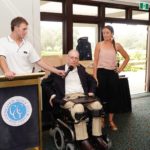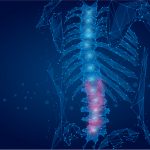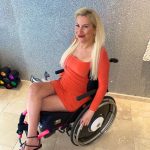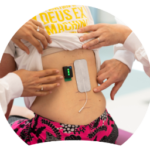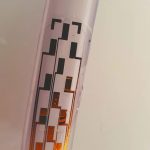We were delighted to attend the Lloyd’s Charity Golf Day 2021 in November at the Concord Golf Club in Sydney. A great day of golf resulted in a fantastic fundraising result for spinal cord injury, even if there wasn’t a…
Tag: research
SpinalCure scientist series: Prof. Simon Gandevia on how he became interested in science and spinal cord injuries
Professor Simon Gandevia is one of the world’s leading neuroscientists, and is the Deputy Director of NeuRA and Senior Principal Research Fellow, NHMRC. He is also the Study Lead for the eWALK trial, funded and initiated by SpinalCure, along with…
‘Dancing molecules’ repair spinal cord injuries in mice
For decades, spinal cord injuries have remained one of the hardest injuries for scientists to treat because nerves in our spinal cord have a limited ability to repair. But a new study from Northwestern University in the United States has…
Lolly Mack: fighting to end paralysis
Lolly Mack was injured at the age of 30 in a nightclub, is an ambassador for several spinal cord injury charities in the UK, and is a member of The Cure Girls. SpinalCure caught up with Lolly to find out…
SpinalCure Scientist series: Dr Quel de Oliveira talks SCI research and robotics
SpinalCure speaks to Dr Camila Quel de Oliveira, the lead researcher on a study testing the feasibility of robotics-assisted game-based arm and hand rehabilitation for people with spinal cord injury (SCI). This study is funded by SpinalCure, due to its potential…
Lack of bladder control is one of the unseen effects of spinal cord injuries. Can neurostimulation help?
One of the unseen side effects of spinal cord injuries is a loss of bladder control. Many people with spinal cord injuries (SCI) have to take drugs to control their bladders, but unfortunately they come with lots of side effects,…
SpinalCure announces continued support for research which could help find a cure for spinal cord injury by helping us better predict outcomes
SpinalCure is pleased to announce our continued support over three years for research that is examining the inflammatory response and predicting outcomes of new spinal cord injuries — essential for progress towards a cure. The research is led by Associate…
Study reviews use of neurostimulation in early recovery from an SCI
A recent study has shown for the first time that transcutaneous spinal cord stimulation, also known as neurostimulation, can be used successfully in people while they are still recovering in hospital, writes Tom Elphick, SpinalCure Community Ambassador. Neurostimulation is one of…
Scientists partially repair injured spinal cords using patients’ own cells
An early stage trial has shown improvement in motor functions and feeling from intravenous injection of bone marrow derived stem cells. This is a world-first: it is the first time a patient’s own bone marrow derived stem (MSCs) cells have…
Tiny spinal cord stimulator could improve access to treatment
A tiny inflatable spinal cord stimulator has been developed by researchers at the University of Cambridge with the aim of making spinal cord stimulation more practical and accessible. While the device was developed for people with back or leg pain,…


